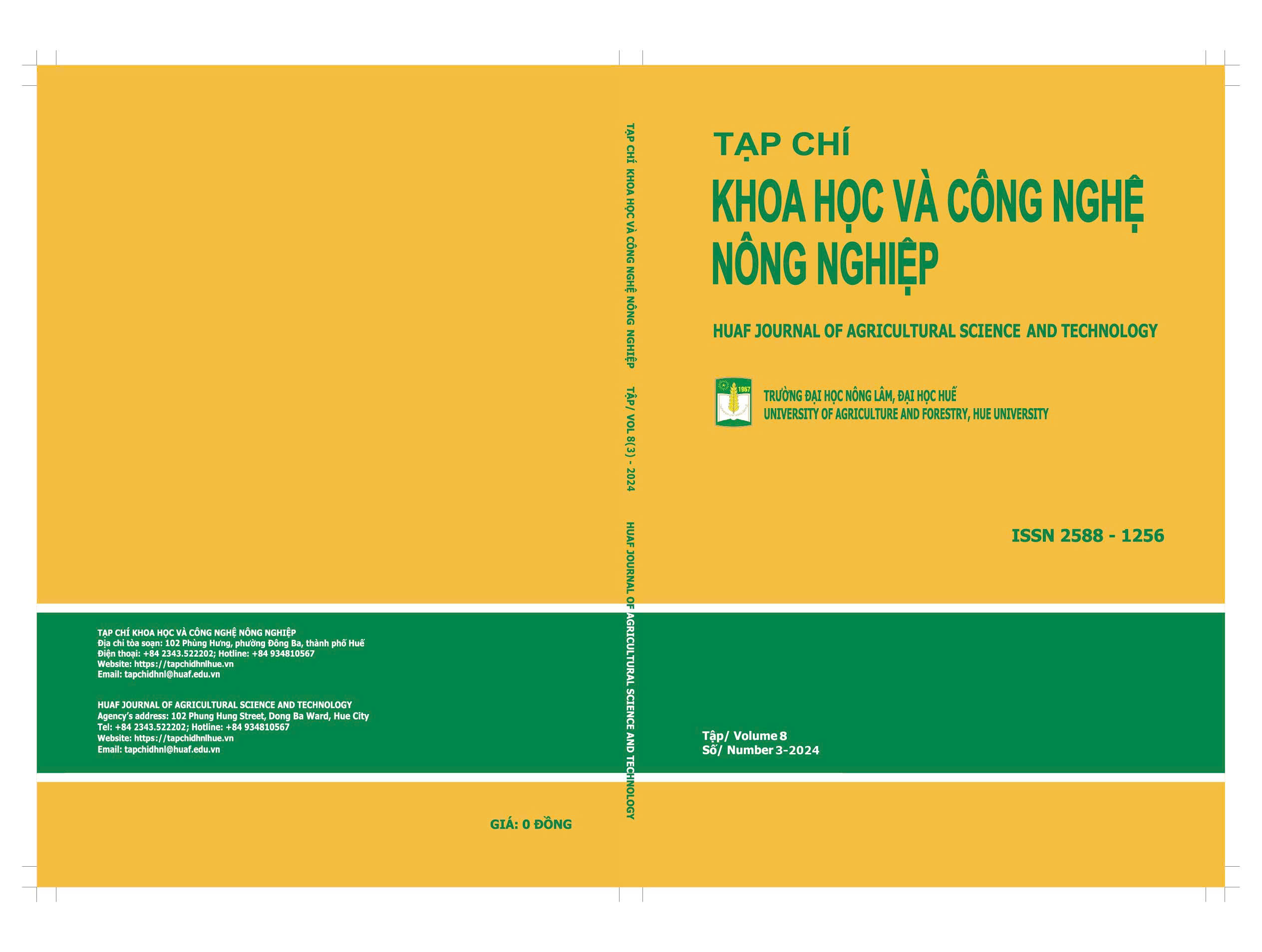##plugins.themes.huaf_theme.article.main##
Abstract
The study was conducted to optimize some growth and development conditions to achieve the maximum number of vegetative cells of the Bacillus subtilis-B23 strain. The colony titration technique was used to quantify CFU/mL. The results showed that at 1% seeding concentration, the largest number of B. subtilis-B23 cells will be achieved after 14 hours (9.25 ± 0.04 log CFU/mL). The temperature of 37°C was the most suitable for the growth of B. subtilis-B23 (9.45 ± 0.06 log CFU/mL). At a seeding rate of 1% and a cultivation temperature of 37°C, the optimal shaking speed was 80 rpm/min, achieving an average bacterial density of 9.61 ± 0.02 log CFU/mL. There is no obvious difference in the number of cells obtained when tested with 3 environments MT1, MT2, MT3; however, the results recorded in MT1 environment showed the highest number of bacterial cells (9.64 ± 0.079 log CFU/mL). The optimal number of spores formed after 2 hours of culture in LB medium supplemented with KCl and MgSO4. Therefore, optimizing the culture conditions for B. subtilis-B23 will result in the highest number of vegetative cells and the greatest yield of B. subtilis-B23 spores.
##plugins.themes.huaf_theme.article.details##
References
Tiêu chuẩn Việt Nam (TCVN ) 4884-1. (2015). Phương pháp định lượng vi sinh vật - Đếm khuẩn lạc bằng kỹ thuật đổ đĩa.
Kheiri, R., & Akhtari, L. (2016). Antimicrobial resistance and integron gene cassette arrays in commensal Escherichia coli from human and animal sources in IRI. Gut Pathog, 8(1), 1-10. DOI: 10.1186/s13099-016-0123-3
Krysiak, K., Konkol, D. & Korczyński M. (2021). Overview of the Use of Probiotics in Poultry Production. Animals, 11(6), 2-24. DOI: 10.3390/ani11061620.
Lee, J., Park, I., Choi, Y., & Cho, J. (2012). Bacillus strains as feed additives: In vitro evaluation of its potential probiotic properties. Revista Colombiana de Ciencias Pecuarias, 25(4), 577-585.
Leser, T., Knarreborg, A., & Worm, J. (2008). Germination and outgrowth of Bacillus subtilis and Bacillus licheniformis spores in the gastrointestinal tract of pigs. Journal of Appllied Microbiology, 104(4), 1025–1033. DOI: 10.1111/j.1365-2672.2007.03633.x
Ming, S., Zhang, Y., Tao, R., Xiao, N., Zhou, W., Rong, J., & Li, G. (2019). Experimental study on optimization of culture medium and culture environment of Bacillus megaterium. In IOP Conference Series: Materials Science and Engineering. 612 (2) pp. 022113). IOP Publishing. DOI: 10.1016/B978-0-08-102491-1.00013-7.
Sahu, O., & Singh, N. (2019). Significance of bioadsorption process on textile industry wastewater. In The impact and prospects of green chemistry for textile technology (pp. 367-416). Woodhead Publishing. DOI: 10.1016/B978-0-08-102491-1.00013-7.
Stein, T. (2005). Bacillus subtilis antibiotics: structures, syntheses and specific functions. Molecular Microbiology, 56(4): 845-857. DOI: 10.1111/j.1365-2958.2005.04587.x
Tian, Z., Hou, L., Hu, M., Gao, Y., Li, D., Fan, B., & Li, S. (2022). Optimization of sporulation conditions for Bacillus subtilis BSNK-5. Processes, 10(6), 2-10. DOI: 10.3390/pr10061133.
Westers, L., Westers, H., & Quax, W. J. (2004). Bacillus subtilis as cell factory for pharmaceutical proteins: a biotechnological approach to optimize the host organism. Biochimica et biophysica acta, 1694(1-3), 299–310. DOI: 10.1016/j.bbamcr. 2004.02.01.

